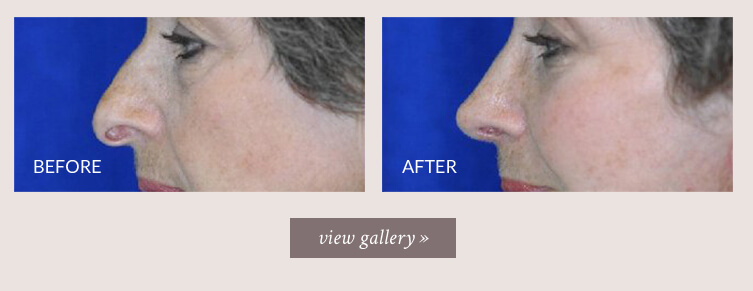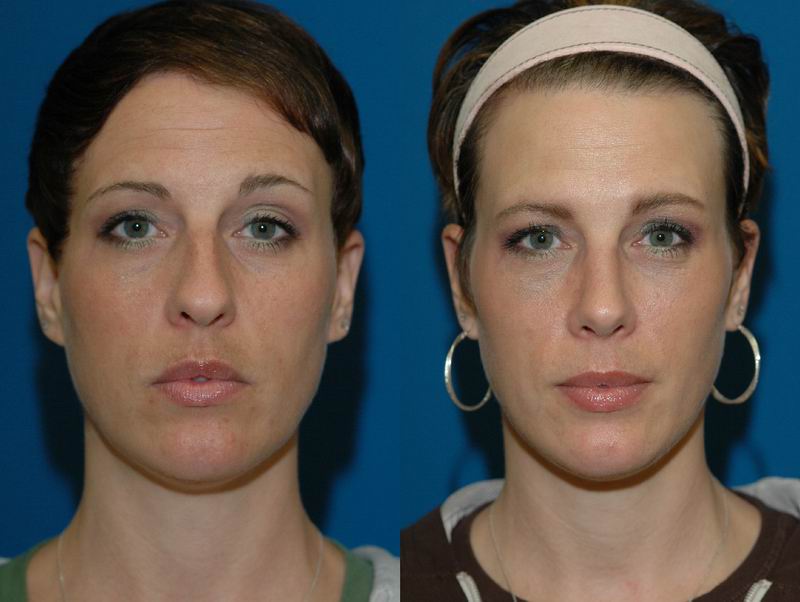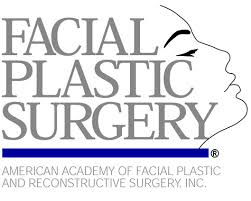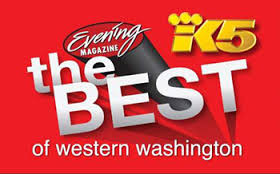Rhinoplasty
Rhinoplasty (plastic surgery of the nose, or nose job) is the most commonly performed procedure in facial plastic surgery. The name rhinoplasty is a blend of the words rhino (nose) and plasty (to mold or shape). Rhinoplasty is by far the most intricate and artistic procedure in facial plastic surgery. Dr. Naficy believes that the goal of rhinoplasty should be a nose that looks attractive and natural, and is in harmony with the rest of the face without having an "operated-on" look. Dr. Naficy specializes in rhinoplasty and in typical year performs 20 times more rhinoplasty procedures than the average plastic surgeon (based on ASPS data).
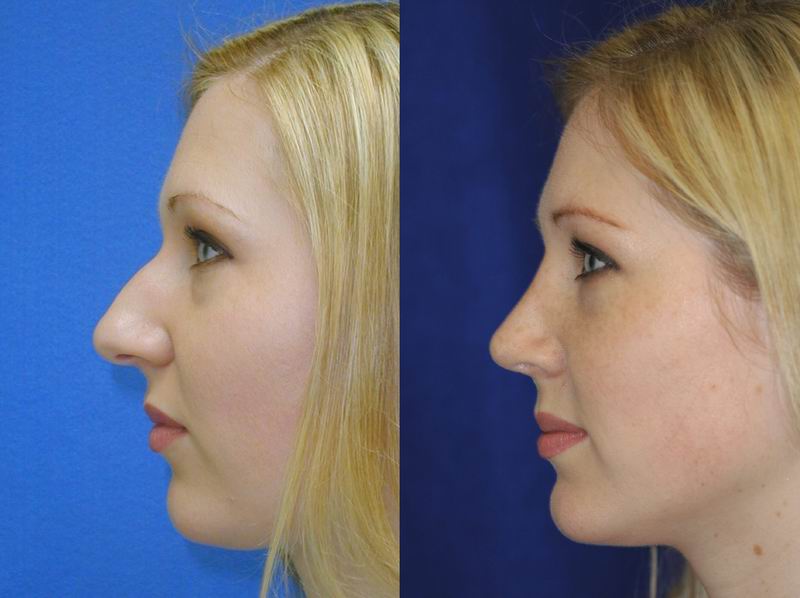
Rhinoplasty by Dr. Sam Naficy. * Individual results may vary.
Dr. Naficy's practice has been 100% devoted to rhinoplasty and facial plastic surgery for the past 18 years. This is why Seattle doctors and patients have voted Dr. Naficy one of the top plastic surgeons for the face. Patients from the entire globe seek Dr. Naficy's expertise and he has many patients flying in for surgery both nationally and internationally.
Rhinoplasty Photo Gallery
This photo gallery contains representative before and after images of rhinoplasty procedures performed by Dr. Sam Naficy. Click on any of the thumbnails to enter the slide show. All rhinoplasty and other facial plastic surgery procedures were performed by Dr. Sam Naficy. The text accompanying the photos describes the details of the procedures performed.
* Individual results may vary.
What can Rhinoplasty achieve?
Many undesirable features of the nose may be improved through rhinoplasty. Noses may be made narrower, straighter, longer, or shorter. Humps may be removed and the shape, size, angle, and definition of the tip of the nose may be altered. Breathing problems, such as those caused by a deviated septum, nasal valve collapse, or enlarged turbinates may also be corrected at the same time as the cosmetic changes. The art of rhinoplasty is in obtaining the desired changes, while maintaining a natural appearance to the nose. Nasal plastic surgery may be performed for strictly cosmetic reasons (cosmetic rhinoplasty), for strictly breathing reasons (septoplasty), and more commonly for a combination of both (rhinoplasty + septoplasty). Rhinoplasty may be performed at any time after facial growth has been completed. This usually translates into age 15-16 for women and age 16-17 for men.
Rhinoplasty for Bump On The Bridge
This is the one of the most common reasons for men and women seeking rhinoplasty surgery. The hump (or bump) may be made of bone, cartilage, or typically a mixture of both. In addition to the hump there may be other imperfections in the profile, such as the angle between the nose and the upper lip, which could also be corrected.
The ideal outcome in rhinoplasty is a natural-appearing nose with balance and harmony, enhancing the beauty of the eyes and lips.
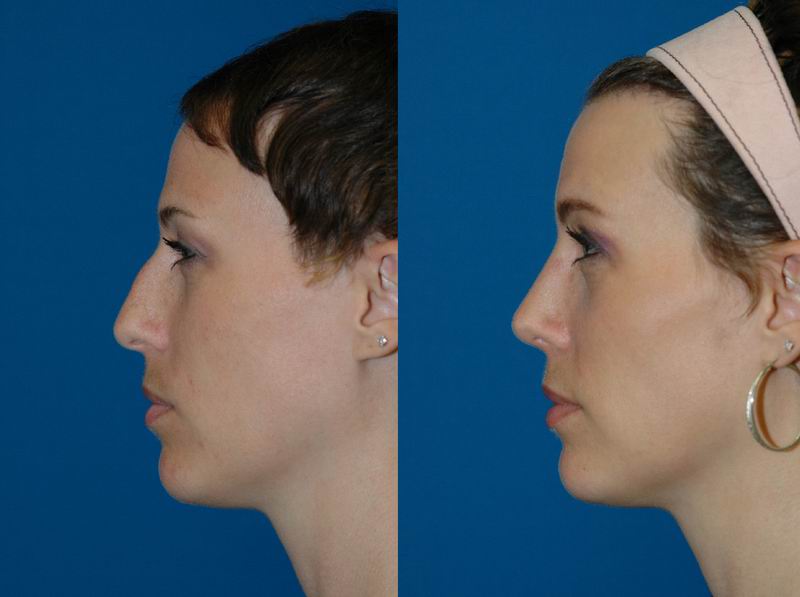
Rhinoplasty for bump on the bridge by Dr. Sam Naficy. * Individual results may vary.
Rhinoplasty for Hooked & Droopy Tip
Mostly a profile problem, certain noses have a hooked and droopy profile. Ideally, the angle between the upper lip and the nose (the nasolabial angle) should be between 90-105 in women, and between 90-95 degrees in men. When this angle is smaller than 90 degrees, it gives the appearance that the tip of the nose is drooping. The drooping of the nose tip is often accentuated with smiling.
In addition to removal of the hump, reshaping of the tip of the nose is required to produce a more desirable nasolabial angle. Good judgment and a strong artistic sense of facial balance and harmony are required to maintain a natural outcome.
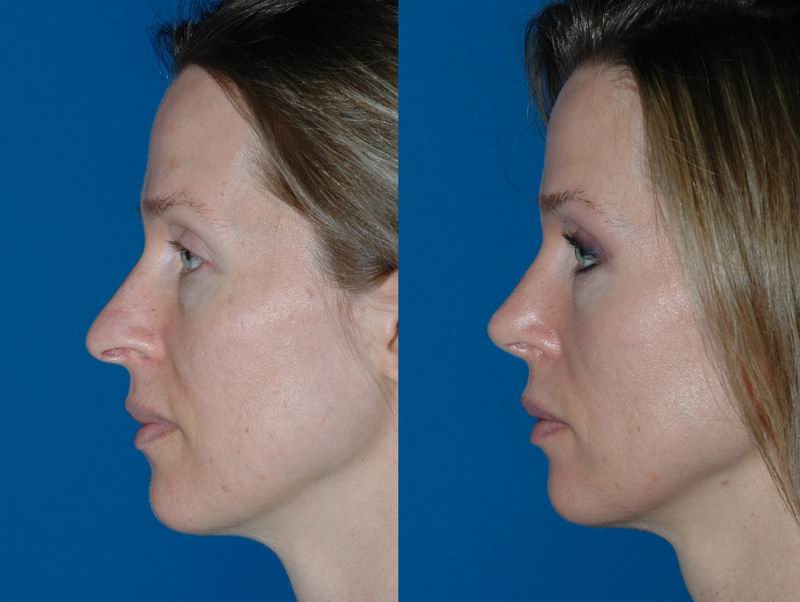
Rhinoplasty for hooked and droopy tip by Dr. Sam Naficy. * Individual results may vary.
Rhinoplasty for Wide Round Tip
Some noses show their undesirable features mostly from the front view. One of the more common scenarios is a nose with a tip that is too wide or too round.
Correction of a wide, round, or boxy tip requires careful reshaping and sculpting of the tip cartilages in order to reduce tip size and improve tip definition. At the same time, the surgeon must be careful to not disrupt the structural support of the nose so that the nasal passages do not become obstructed. Dr. Naficy uses modern rhinoplasty techniques which create a natural appearing tip.
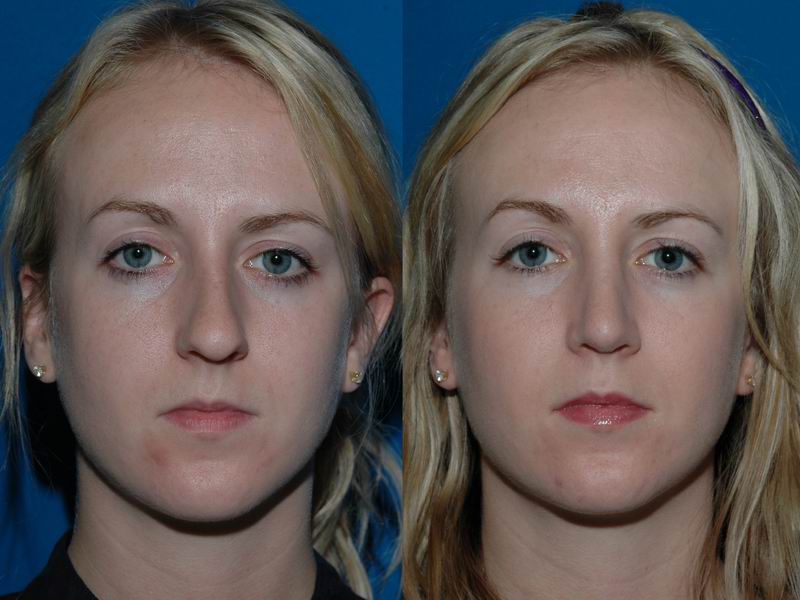
Rhinoplasty for wide round tip by Dr. Sam Naficy. * Individual results may vary.
Rhinoplasty for Short & Upturned Nose
At times the reason for the rhinoplasty is that the nose appears too short, upturned and somewhat unnatural in shape. Rhinoplasty can be performed to lengthen the nose. Lengthening a short nose is a challenging operation and Dr. Naficy has published a landmark article discussing the techniques for lengthening the nose.

Rhinoplasty for short upturned nose by Dr. Sam Naficy. * Individual results may vary.
Rhinoplasty for a Low Radix
The radix is the term used to describe the transition of the forehead to the nose. In some noses, the radix is too far sunken in thus creating an unnatural appearance to the nose. In these situations, actually adding some height to the radix (by using the patient's own cartilage) creates a more attractive nose.
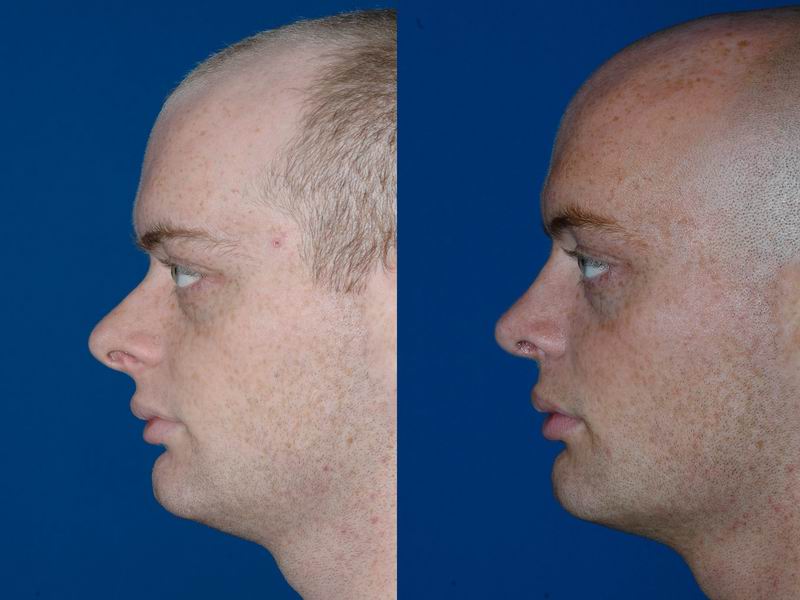
Rhinoplasty for a low radix by Dr. Sam Naficy. * Individual results may vary.
Rhinoplasty for Crooked Nose
A crooked, asymmetric, or deviated nose can throw the entire face off balance. The cause of a crooked nose may be the cartilage of the septum, the external cartilages of the nose, or underlying asymmetry of the face as a whole. Deviation of the septum, if severe, can push the lower half of the nose off center. Noses that have been fractured (broken) can also be crooked, as a result of the displaced nasal bones that healed in a crooked position.
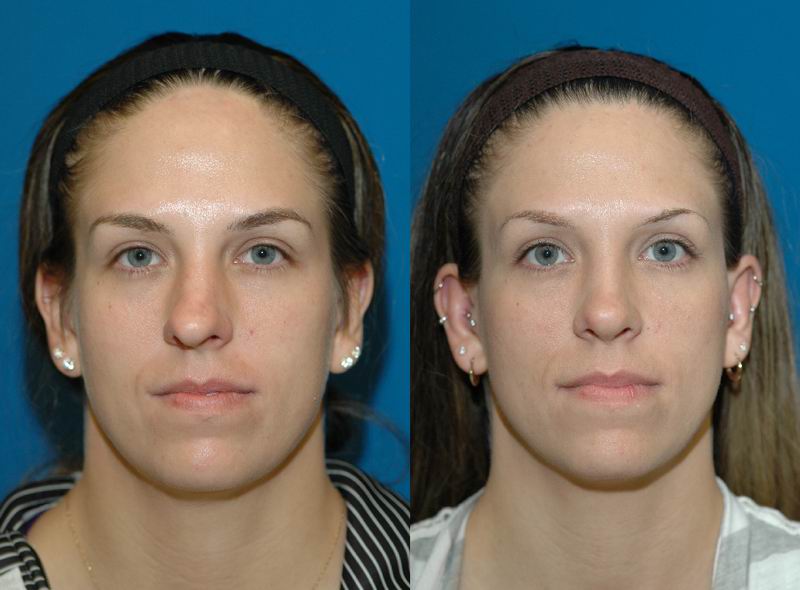
Rhinoplasty for a crooked nose by Dr. Sam Naficy. * Individual results may vary.
Correction of a crooked nose is technically challenging, often requiring manipulation of both the cartilage and bone of the nose, as well as the septum. With a crooked nose, there is often nasal obstruction caused by a deviated septum. Simultaneous straightening of the septum will also help improve the nasal obstruction.

Rhinoplasty for a crooked nose by Dr. Sam Naficy. * Individual results may vary.
Revision Rhinoplasty
Dr. Naficy specializes in corrective surgery (revision rhinoplasty) for situations where the outcome from an initial rhinoplasty surgery was less than ideal. There are a number of reasons why patients seek a secondary rhinoplasty procedure. In certain situations, the initial procedure may have not fully corrected the undesirable features of the nose. In other situations, the initial rhinoplasty may have actually resulted in certain undesirable features. Some of the more common causes for revision rhinoplasty include a residual hump, irregularity or asymmetry of the bridge, tip asymmetry, tip pinching and collapse, too much nostril show (caused by alar retraction and/or hanging columella), or tip deformities (bossae).
Dr. Naficy specializes in complex revision rhinoplasty procedures and has an international clientele. In revision rhinoplasty, often a very small change, in the proper location, can make a big difference in the overall look of the nose.
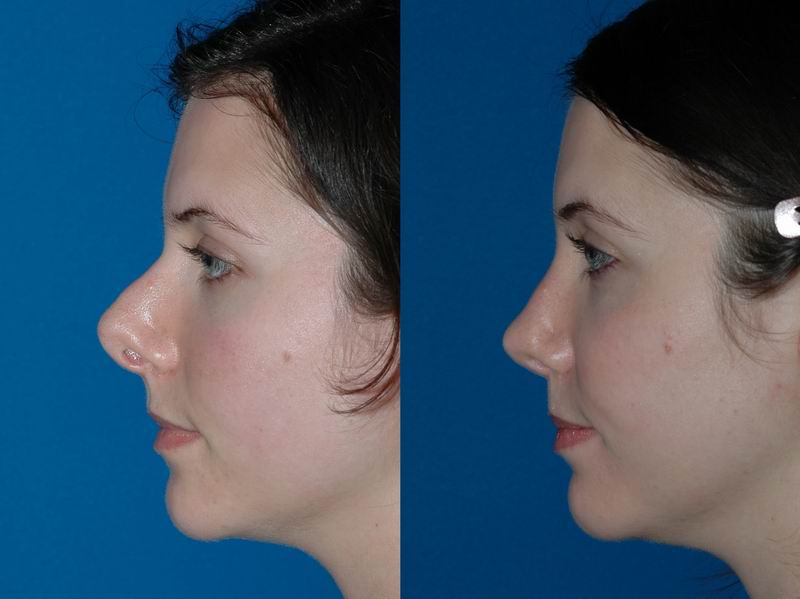
Revision rhinoplasty by Dr. Sam Naficy. * Individual results may vary.
Revision rhinoplasty typically requires a careful balance of removing and adding (grafting) cartilage to the nose to obtain the desired outcome. In many instances the cartilage needed for grafting can be obtained from the nose itself, usually from the septum. When septal cartilage is not present or previously used, cartilage may be harvested from the back of the ear or from the rib. For more information on revision rhinoplasty please visit our revision rhinoplasty page.
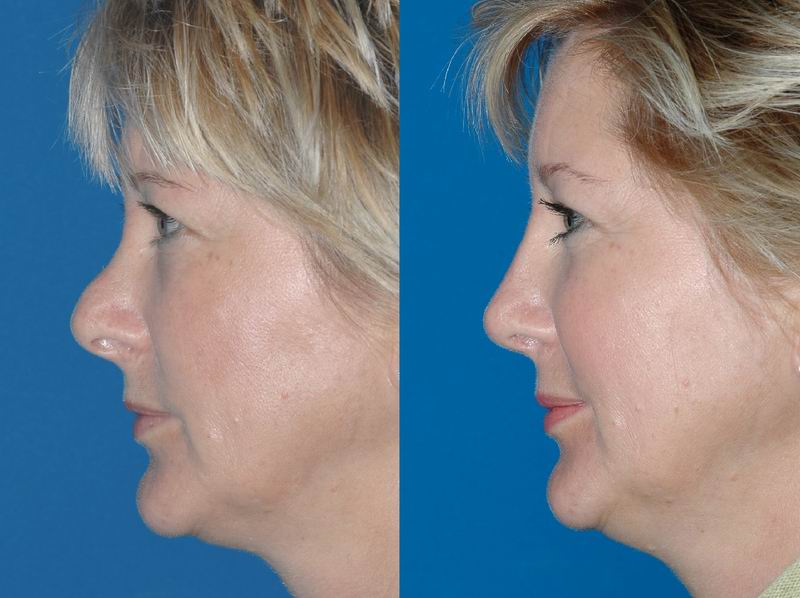
Revision rhinoplasty by Dr. Sam Naficy. * Individual results may vary.
Asian Rhinoplasty
Asian rhinoplasty is different than the type of rhinoplasty typically performed on Caucasian patients for a number of reasons. With few exceptions, Asians generally require augmentation of the nose to achieve a good and natural cosmetic result, in contrast to Caucasian patients who generally require reduction. The goal of Asian rhinoplasty is to create an attractive Asian nose, but not to create an attractive Caucasian nose on an Asian face. One of the common features of many Asian noses is a low, flat bridge which lacks definition. This low bridge creates an unfavorable profile where the upper half of the nose looks too weak relative to the tip of the nose. On the front view of the Asian nose, the lack of height on the bridge results in poor definition of the nose. The flat bridge does not cast the ideal shadows necessary to define the side walls of the nose. Asian noses also tend to have weaker cartilages in the tip and at times thicker skin. This often results in tips that lack definition and tend to droop more. The common techniques of tip rhinoplasty used in Caucasian patients (trimming of cartilage and suturing of cartilage) don't work in Asian rhinopalsty. Instead, Dr. Naficy uses Asian rhinopasty techniques which create tip support and make the tip taller and thus narrower. To see a more detailed discussion of Asina rhinoplasty please visit the Asian rhinoplasty page of our website.
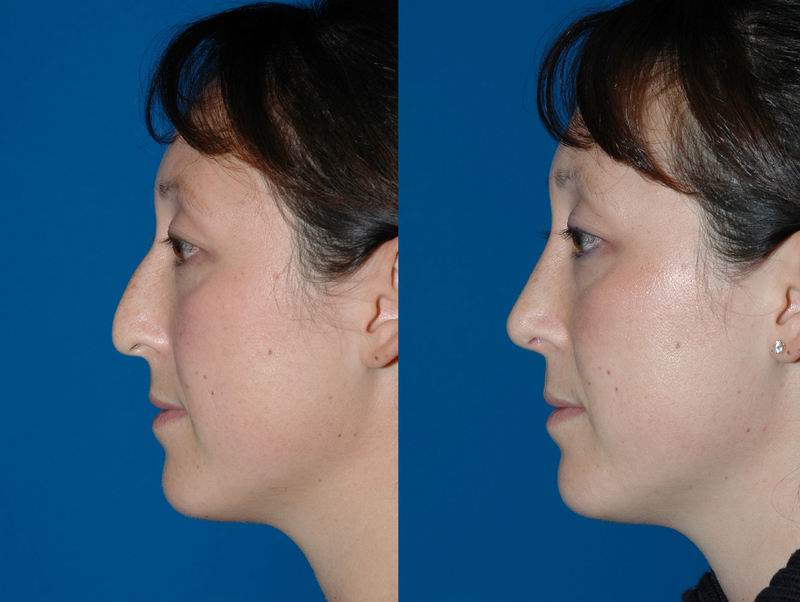
Asian rhinoplasty by Dr. Sam Naficy. * Individual results may vary.
Rhinoplasty in Men
Male rhinoplasty has shares similarities with female rhinoplasty in some aspects but has some key differences. In male rhinoplasty, strength and symmetry of the nose are typically the most important. The male nose should not be made too small or too upturned as this may feminize the face.
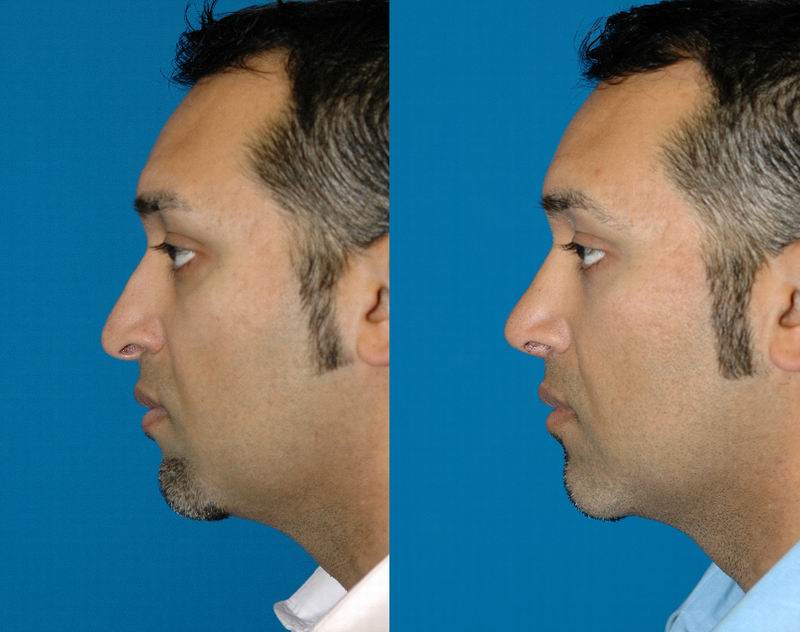
Male Rhinoplasty by Dr. Sam Naficy. * Individual results may vary.
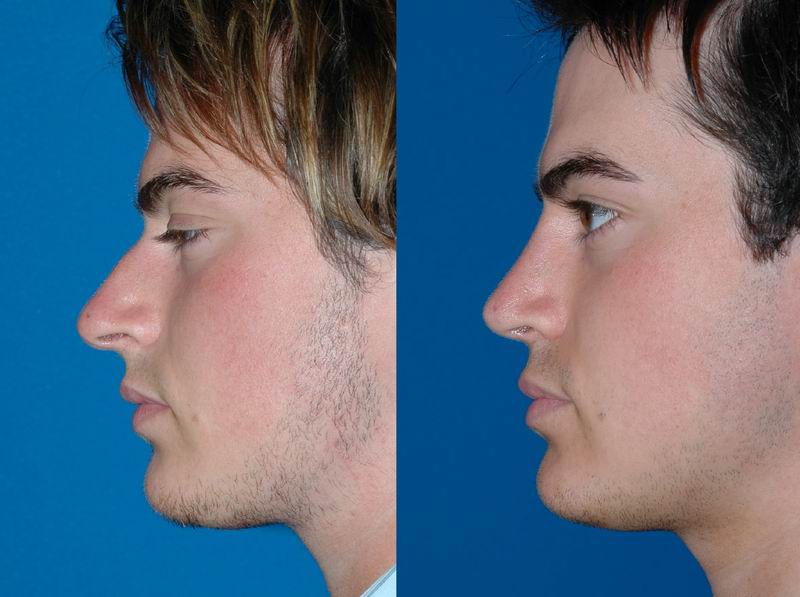
Male Rhinoplasty by Dr. Sam Naficy. * Individual results may vary.
What Type of Anesthesia is Used?
A number of anesthesia options are available and your anesthesia provider will discuss with you which one is most appropriate for your health status and procedure. Some procedures require general anesthesia, while others may be done with IV sedation. With either, your heart rate, blood pressure, breathing and oxygen levels are monitored continuously by your anesthesia provider.
General anesthesia means that you are completely asleep for surgery and the placement of an intravenous line and a breathing tube is required. Frequently, numbing medication is also placed during surgery by your surgeon.
IV sedation is also called “monitored anesthesia care” or MAC. This involves receiving sedation and pain medication through an intravenous line (IV). At the beginning of the procedure, when you will be the sleepiest, your surgeon will be placing numbing medication in the area of the surgery. Once the area is numb you will require less sedation and pain medication but you will continue to receive enough medication to keep you sedated and comfortable during the entire procedure. During your surgery you may be receiving oxygen. Airway devices may be placed during IV sedation to keep you breathing normally.
Anesthesia guidelines [21kb PDF]
What is the Recovery like?
A tape dressing will cover the nose for one week. With modern techniques employed by Dr. Naficy, no packing is required inside the nose. There may be some discoloration and swelling around the eyes which will improve over time. One week is usually enough time for returning to work and social activities although individual healing times may vary.
Post-operative care instructions [18kb PDF]
Rhinoplasty Recovery at One week
Each person is unique and has their own timeline for recovery. Typically, when the tape dressing is removed at one week, most patients will look presentable and will have a small amout of bruising that can be covered up with concealer or a tinted sunscreen.
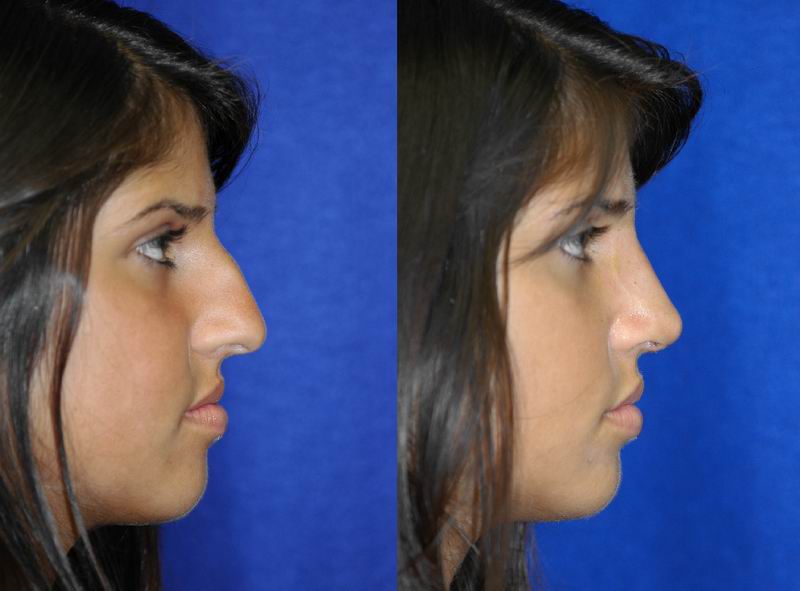
Only 7 days after Rhinoplasty by Dr. Sam Naficy. * Individual results may vary.
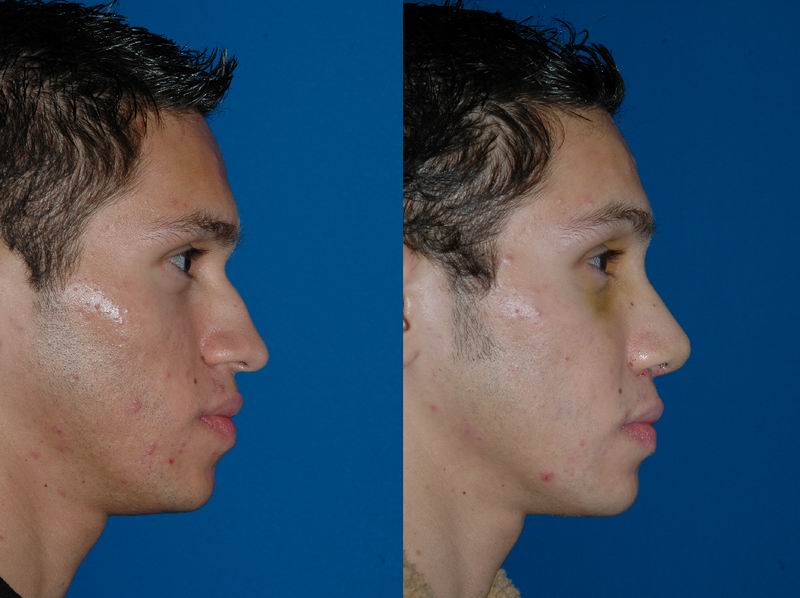
Only 7 days after Rhinoplasty by Dr. Sam Naficy. * Individual results may vary.
Rhinoplasty Risks & Side Effects
With todays modern techniques and advanced anesthesia, rhinoplasty is a very safe procedure. The main short-term risk of rhinoplasty is bleeding (nose bleed) which can occur in the early days after surgery. The main long-term risk of rhinoplasty is nasal obstruction, which can be avoided by not making the nose too small or too narrow.
I am interested! What do I do next?
If you are considering this procedure we encourage you to complete this Surgical Consultation Intake Form. There is a great variety in nose shapes and features and each procedure must be custom tailored for the patient to get the best possible result. Dr. Naficy will tell you whether you are a suitable candidate for this procedure and inform you of the potential risks of the procedure.


